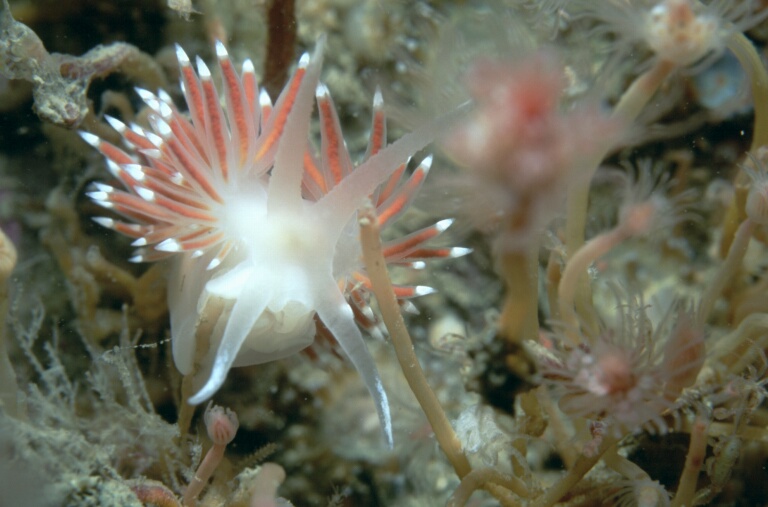Nudibranch, Coryphella browni

Photo copyright Tim Nicholson.
Nudibranch Coryphella browni taken on Chicken Rock, Isle of Man.
You find nudibranchs around the world, in temperate and tropical seas, and even in the Antarctic. They are hermaphrodites: possessing both male and female organs. Some lay a single string of eggs, others produce coiled flat ribbons. These are usually white but may be red, pink, orange or other colours.
Coryphella browni feeds on hydroids (shown in the photo), which are simple stinging-cell animals related to corals and sea anemones. It not only doesn't mind their stinging cells, it actually puts them to use. The nudibranch passes the intact cells through its digestive tract and out to the cerata tips. Any animal taking a bite out of the cerata will cause the stinging cells to discharge, then give up and go and eat something less painful.
Coryphella browni is up to 5 cm long and occurs around the British Isles and Northern Europe. Its egg masses are laid in a wavy spiral near its hydroid food.
Further Reading
Great British Marine Animals, by Paul Naylor, Deltor (2011)
Dive sites and marine life of the Calf of Man and neighbouring
area by Bill Sanderson, Bruce McGregor and Andrew Brierley, Immel Publishing Ltd, 1994, Paperback.
The Underwater Photographer: Digital and Traditional Techniques, by by Martin Edge, Paperback, 536 pages (2009)
